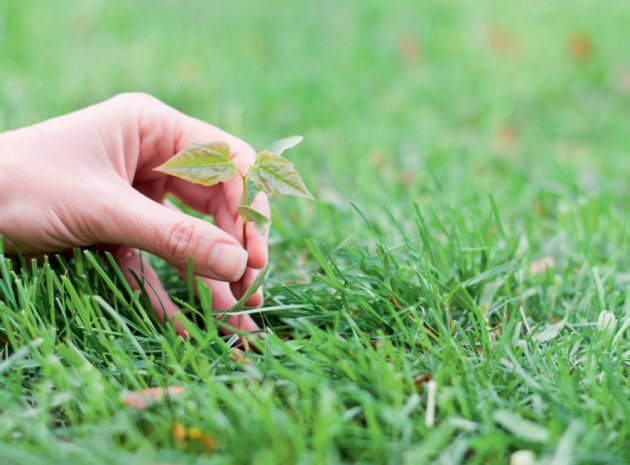I remember having a conversation with a teacher friend who assured me that there was no way she could get into ‘all that school garden stuff’ as she was ‘just no good at it and wouldn’t know where to start’. This conversation took place in her own garden. Needless to say she had a well established pond, a flourishing vegetable plot, nicely ordered flower beds and a few bird boxes and feeders.
For some reason we seem to have fallen into a mindset that says a school garden is so very different from a domestic garden that we need specialist training and resources to create one. But whilst there are undoubtedly things that we need to consider that are specific to an educational establishment, that shouldn’t be a reason not to make start even if resources and experience are limited.
Ponds
Ponds are a brilliant addition to a school garden – they change throughout the season, they teem with all sorts of life that can easily be viewed in a jam jar and they are relatively cheap and easy to maintain.
Mini-wildlife ponds are very easy to create with a washing up bowl, a small amount of gravel, some larger stones or cobbles and a couple of oxygenating plants from your local aquatic centre.
Locate your mini-pond in a safe area where it can be observed but not trampled. The key point is ensuring that even the tiniest creatures can clamber in and out of the water so use the stones and cobbles to create landing spots. You don’t need to introduce water inhabitants – in the words of the current RSPB campaign: ‘if you build it – they will come’.
Larger ponds are more complex to create but need not be expensive, seek advice from your local garden centre. You may even like to ask them to come along and help you to build it – some garden centres provide local volunteer support and even reduced price items for their local schools.
The critical thing to be aware of when creating a larger pond is the strength and security of the liner, there is nothing more frustrating, time consuming and water wasting than a leaking pond. It is the source of most of the pond related enquiries we get in the Learning Through Landscapes office so do invest time into getting it right.
Ponds should be teamed with accessible platforms so that pupils can dip their nets in safety whatever the weather. Decking in the wet weather can become slippery so do treat with a coat of anti-slip varnish, this is cheap and easy to do. Alternatively staple chicken wire paths firmly along the middle of the decked area for better grip and a longer term solution.
Wildlife habitats
Every school, whatever the size of the outdoor space, can provide a wildlife habitat. Different species require different environments. More urban schools should be careful that any bought feed does not encourage rats so make sure to use elevated feeding stations for birds.
Bird boxes are easy to make (see ltl.org.uk for more information) and bug hotels can be as simple as a pile of rotting logs. For some wildlife all you need to do is stop cutting the grass in an area and throw down a handful of pollinator-friendly wildflower seeds. The benefit of having a habitat area is massively increased if there is a space where pupils can observe creatures’ comings and goings without disturbing them so always think carefully about hides, seating spots and viewing areas.
Growing spaces
Even a school with little more than a stretch of tarmac can enjoy planning and growing a garden. Wheeled pot stands are a fantastic way to change and adapt your spaces and create maximum flexibility. Whilst pots do take more maintenance in terms of watering why not set this as a challenge for the students?
Investigating sustainable irrigation methods is a worthy addition to any KS3/4 curriculum. Fruit and vegetables as well as shrubs and flowers can all be grown in pots although for longer term planting it is preferable to find a space directly into the ground.
Planters can be stood down and emptied over the summer and then re-filled in the autumn, this is a great way to introduce a sense of season and rhythm to your outside areas.
There are some terrific examples of schools in very confined grounds using vertical planting to their advantage. Perfect for any trailing or tumbling consumable planting these can also look wonderful if filled with pollinator species. The ‘greening’ effect both looks attractive and can cool over-heated areas.
Many pupils will not have access to a garden of their own – for them especially, a school garden is well worth the effort.
About the Author
Juno Hollyhock has been executive director at Learning Through Landscapes (LTL) since 2012. Become a member of LTL’s membership to gain access to the latest news in the outdoor learning sector, hundreds of downloadable guidance notes, lesson ideas and inspirational images PLUS access to LTL’s expert advice through email. All of this support to help you make a difference to your outside space for just £12 per year (plus VAT). Visit ltl.org.uk/membership/member.php.
You may also be interested in...









